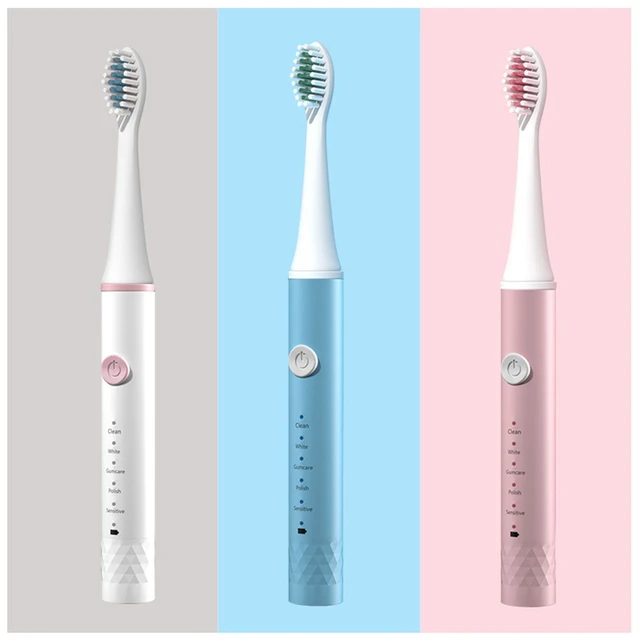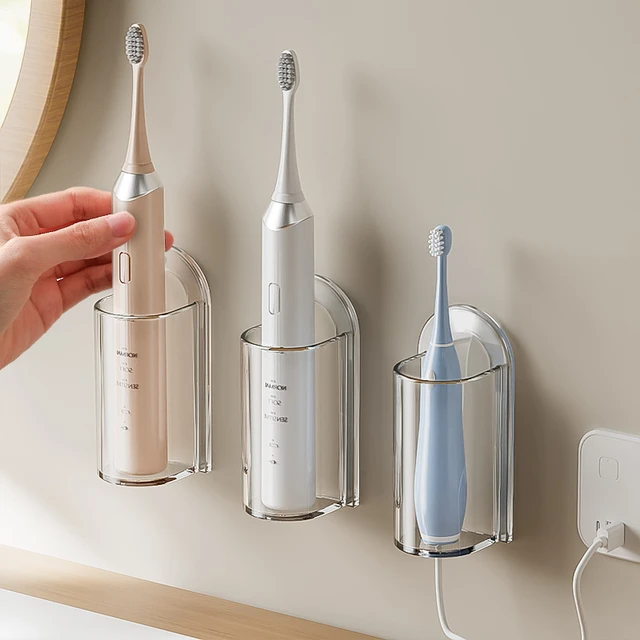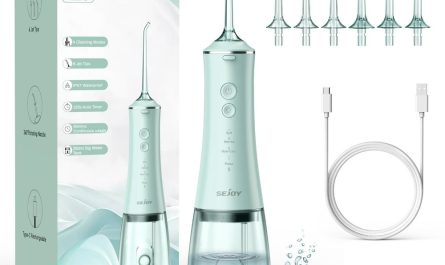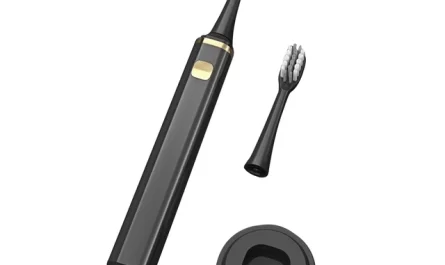Brushing your teeth is an essential part of maintaining good oral hygiene, and the advent of electric toothbrushes has made this task more efficient and effective than ever before. Electric toothbrushes provide many benefits, from improved plaque removal to ease of use, especially for individuals with limited dexterity. This article will guide you how to brush with electric toothbrush, ensuring that you get the most out of your dental care routine.
The Importance of Proper Brushing Technique
Why Brushing Matters
Oral hygiene is a critical aspect of overall health. Proper brushing helps remove food particles, plaque, and bacteria that can lead to cavities, gum disease, and bad breath. Electric toothbrushes are designed to enhance this process with their oscillating, rotating, or sonic movements, making it easier to achieve a thorough clean.
Common Mistakes in Brushing
Even with an electric toothbrush, improper techniques can hinder your oral hygiene efforts. Some common mistakes include brushing too hard, not brushing for long enough, and neglecting hard-to-reach areas. By learning the correct method of using an electric toothbrush, you can avoid these pitfalls and ensure your teeth and gums remain healthy.
Choosing the Right Electric Toothbrush
Types of Electric Toothbrushes
There are various types of electric toothbrushes available, each with unique features. Oscillating-rotating brushes, sonic brushes, and ultrasonic brushes are some options. Oscillating-rotating brushes have small, round heads that rotate in one direction and then another, while sonic brushes use high-frequency vibrations to clean teeth. Ultrasonic brushes use ultra-high frequency vibrations to break up plaque and bacteria.
Features to Consider
When choosing an electric toothbrush, consider features such as a timer, pressure sensor, toothbrush head size, and battery life. A timer ensures that you brush for the dentist-recommended two minutes, while a pressure sensor helps prevent gum damage from brushing too hard. The size of the toothbrush head should be suitable for your mouth, making it easy to reach all areas. Battery life is also important for convenience, especially if you travel frequently.
Preparing to Brush
Setting Up Your Electric Toothbrush
Before you begin brushing, ensure your electric toothbrush is fully charged and assembled correctly. Attach the brush head to the handle securely. If you’re using a brand-new toothbrush, it’s a good idea to rinse the brush head under warm water to remove any residual manufacturing debris.
Applying Toothpaste
Apply a pea-sized amount of fluoride toothpaste to the brush head. Fluoride is essential for strengthening enamel and preventing cavities. It’s important not to use too much toothpaste, as this can create excessive foam, making it difficult to see the areas you are brushing.
Brushing Your Teeth
Positioning the Toothbrush
Hold the electric toothbrush at a 45-degree angle to your gums. This angle helps the bristles clean both the teeth and gum line effectively. Many electric toothbrushes have a built-in timer that pauses or signals every 30 seconds, reminding you to switch to a different quadrant of your mouth.
Brushing Sequence
Divide your mouth into four quadrants: upper right, upper left, lower right, and lower left. Spend about 30 seconds on each quadrant to ensure a thorough clean. Start with the outer surfaces of your teeth, moving the brush head slowly and gently from tooth to tooth. Next, focus on the inner surfaces, and finally, clean the chewing surfaces.
Proper Brushing Technique
With an electric toothbrush, there’s no need to scrub aggressively. Let the electric toothbrush do the work. Move the brush head gently along your teeth, allowing the bristles to oscillate, rotate, or vibrate. Make sure to reach all surfaces, including the back teeth and the gum line. Avoid pressing too hard, as most electric toothbrushes are designed to clean efficiently with minimal pressure.
Additional Tips for Effective Brushing
Cleaning Hard-to-Reach Areas
Make sure to give extra attention to areas that are difficult to reach, such as the back molars and the back of your lower front teeth. These areas are often neglected and can become breeding grounds for plaque and bacteria. Tilt the brush head to various angles to ensure thorough cleaning.
Brushing Your Tongue and Palate
Bacteria can also accumulate on your tongue and the roof of your mouth, leading to bad breath and other oral health issues. Most electric toothbrushes have a tongue-cleaning function or a special brush head for this purpose. Gently brush your tongue and palate to remove bacteria and maintain fresh breath.
Flossing and Mouthwash
While electric toothbrushes are effective at removing plaque, they cannot reach between teeth where food particles and plaque often get trapped. Flossing daily helps clean these areas, preventing cavities and gum disease. Additionally, using a fluoride mouthwash can provide extra protection against bacteria and decay.
Post-Brushing Care
Rinsing and Storing Your Toothbrush
After brushing, rinse the brush head thoroughly under running water to remove any remaining toothpaste and debris. Store your electric toothbrush in an upright position to air dry, which helps prevent the growth of bacteria. If your toothbrush has a cover or case, ensure it has ventilation to avoid moisture buildup.
Replacing the Brush Head
The brush head of an electric toothbrush wears out over time and should be replaced every three months, or sooner if the bristles become frayed. Using a worn-out brush head can reduce the effectiveness of your brushing and potentially harm your gums. Most electric toothbrushes have indicator bristles that fade to remind you when it’s time for a replacement.
Maintaining the Toothbrush Handle
Keep the handle of your electric toothbrush clean by wiping it with a damp cloth regularly. Avoid immersing the handle in water, as this can damage the internal components. Regular maintenance ensures the longevity of your electric toothbrush and keeps it functioning properly.
Special Considerations
For Children
Electric toothbrushes can be particularly beneficial for children, as they make brushing fun and often come with built-in timers to ensure adequate brushing time. Look for electric toothbrushes designed specifically for kids, which are typically smaller and come with child-friendly features.
For Individuals with Braces
Brushing with braces can be challenging, but an electric toothbrush can help remove plaque and food particles more effectively than a manual toothbrush. Use a brush head with soft bristles and a gentle touch to avoid damaging the braces or irritating your gums.
For Individuals with Sensitivity
If you have sensitive teeth or gums, choose an electric toothbrush with a sensitive mode or a brush head designed for sensitive mouths. These features provide a gentler brushing experience while still effectively cleaning your teeth.
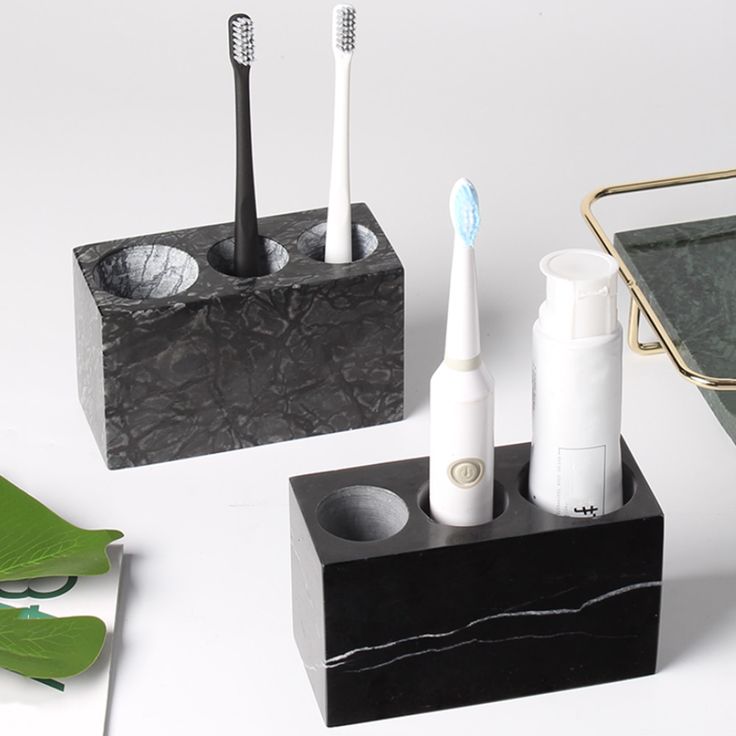 The Role of Dental Visits
The Role of Dental Visits
Importance of Professional Cleanings
Even with the best brushing technique and the most advanced electric toothbrush, regular dental visits are crucial for maintaining optimal oral health. Professional cleanings remove tartar and plaque buildup that brushing and flossing can’t reach. Dentists can also identify and address early signs of dental issues before they become more serious.
Personalized Advice
During dental visits, your dentist can provide personalized advice on your brushing technique, recommend specific toothbrush models or features, and address any concerns you may have. They can also guide you on the best practices for your specific oral health needs, ensuring you get the most benefit from your electric toothbrush.
Staying Consistent
Building a Routine
Consistency is key to maintaining good oral health. Establishing a routine helps ensure you brush and floss regularly. Try to brush your teeth at the same times each day, such as after breakfast and before bed. Setting reminders or using an app can help you stay on track.
Encouraging Family Members
Encourage your family members to adopt good oral hygiene practices, including using electric toothbrushes. Make brushing fun for kids by letting them choose their toothbrush and toothpaste. Lead by example and brush together as a family to instill lifelong healthy habits.
Conclusion: how to brush with electric toothbrush
Brushing your teeth with an electric toothbrush is a simple yet highly effective way to maintain your oral health. By choosing the right toothbrush, applying the correct technique, and incorporating additional oral hygiene practices, you can ensure your teeth and gums stay healthy and strong. Remember, the key to effective brushing is consistency, so be diligent in your routine and schedule regular dental check-ups. Knowing how to brush with electric toothbrush, you can achieve a brighter smile and better overall health.

